What are landscape classes?
Stream health is closely linked to measures of land use intensity such as impervious cover (see land use and stream health). Population density and impervious cover are closely linked. StreamWatch classifies watersheds based on population density for ease of communication. The classes are:
- Urban
- Suburban
- Exurban
- Rural
- Wild
The predominant land class in the Rivanna watershed is exurban, accounting for sixty percent of the basin’s land area. For this reason, our report focuses substantial attention on the exurban landscape as it relates to stream health.
What is a Watershed?
A watershed, also called a basin, is an area of land that drains to one point on a waterway. Close-up photos of landscape classes are shown below, along with some familiar Rivanna watersheds.
Examples of Landscape Classes
Photographs of landscape classes are shown below, along with example watersheds and typical features of each class.
Wild (Reference) Landscape
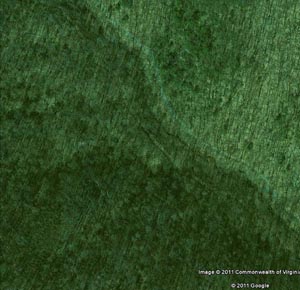
40 acres of wild landscape
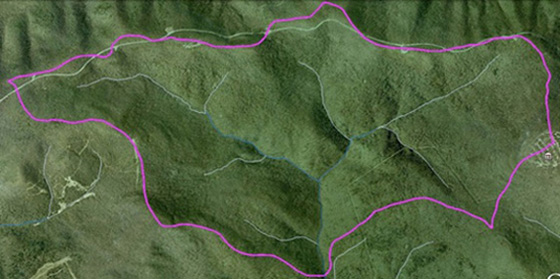
The Upper Doyles River watershed is an example of a wild landscape.
- Typical stream health of wild landscapes is very good.
- Wild landscapes make up about 1% of the Rivanna watershed.
- Average population density in our wild landscapes is about 1 person per square mile.
- Typical forest cover is about 97%.
Rural Landscape
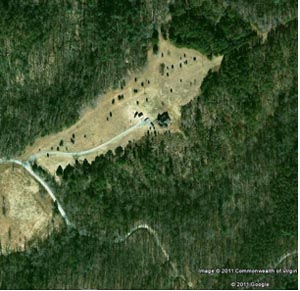
40 acres of rural landscape
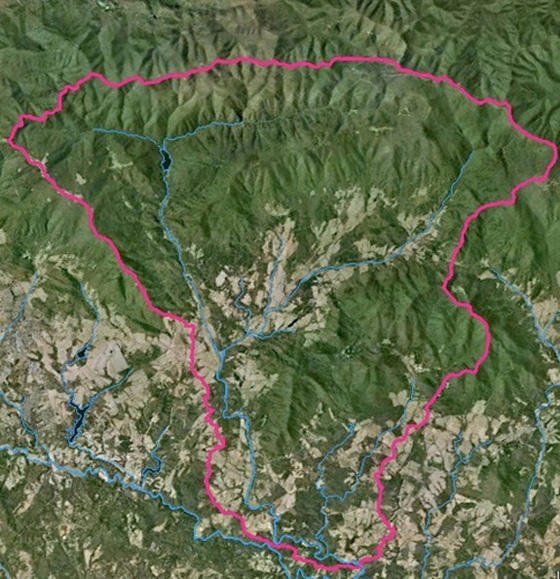
The Moormans River watershed is an example of a rural landscape.
- Typical stream health of rural landscapes is good.
- Rural landscapes makes up about 14% of the Rivanna watershed.
- Average population density in our rural landscapes is about 28 people (about 12 houses) per square mile. This equates to about 53 acres per house.
- Typical forest cover is about 80%.
Exurban Landscape
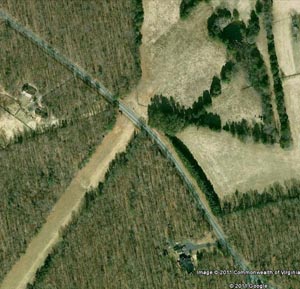
40 acres of exurban landscape
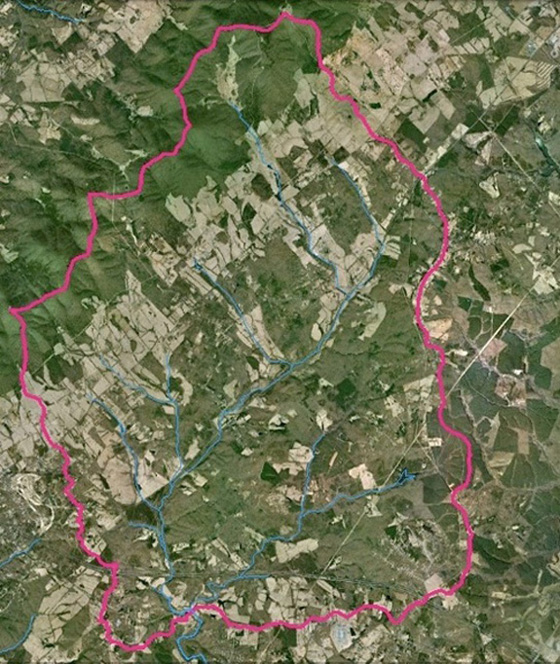
The Mechunk Creek watershed is an example of an exurban landscape.
- Typical stream health in exurban landscapes ranges from fair to good.
- Exurban landscapes makes up about 60% of the Rivanna watershed.
- Average population density in our exurban landscapes is about 86 people (about 37 houses) per square mile. This equates to about 17 acres per house.
- Typical forest cover is about 71%.
Suburban Landscape
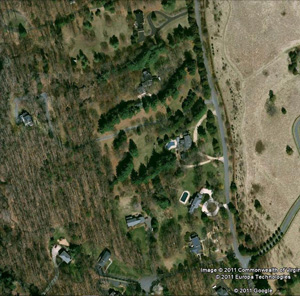
40 acres of suburban landscape
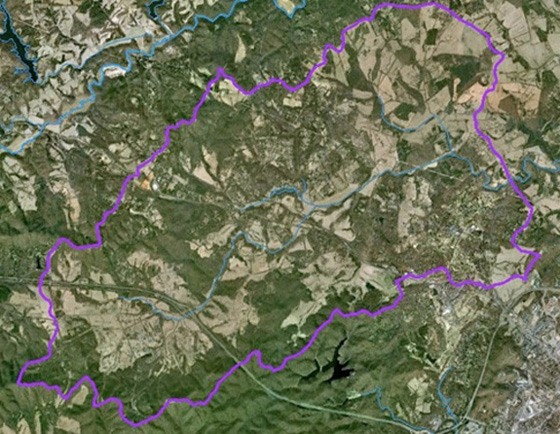
The Ivy Creek watershed is an example of a suburban landscape.
- Typical stream health of suburban landscapes is fair.
- Suburban landscapes makes up about 21% of the Rivanna watershed.
- Average population density in our suburban landscapes is about 367 people (about 160 houses) per square mile. This equates to about 4 acres per house.
- Typical forest cover is about 65%.
Urban Landscape
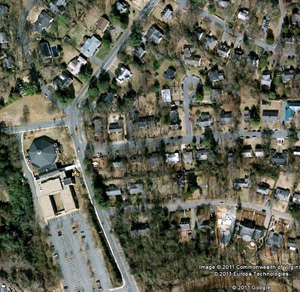
40 acres of urban landscape
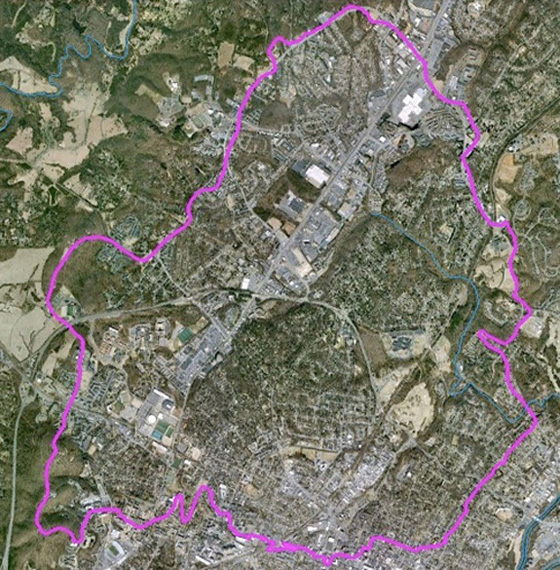
The Meadow Creek watershed is an example of an urban landscape.
- Typical stream health of urban landscapes is poor or very poor.
- Urban landscapes makes up about 5% of the Rivanna watershed.
- Average population density in our urban landscapes is about 2,393 people (about 1,040 houses) per square mile. This equates to about 1/2 acre per house.
- Typical forest cover is about 49%.
